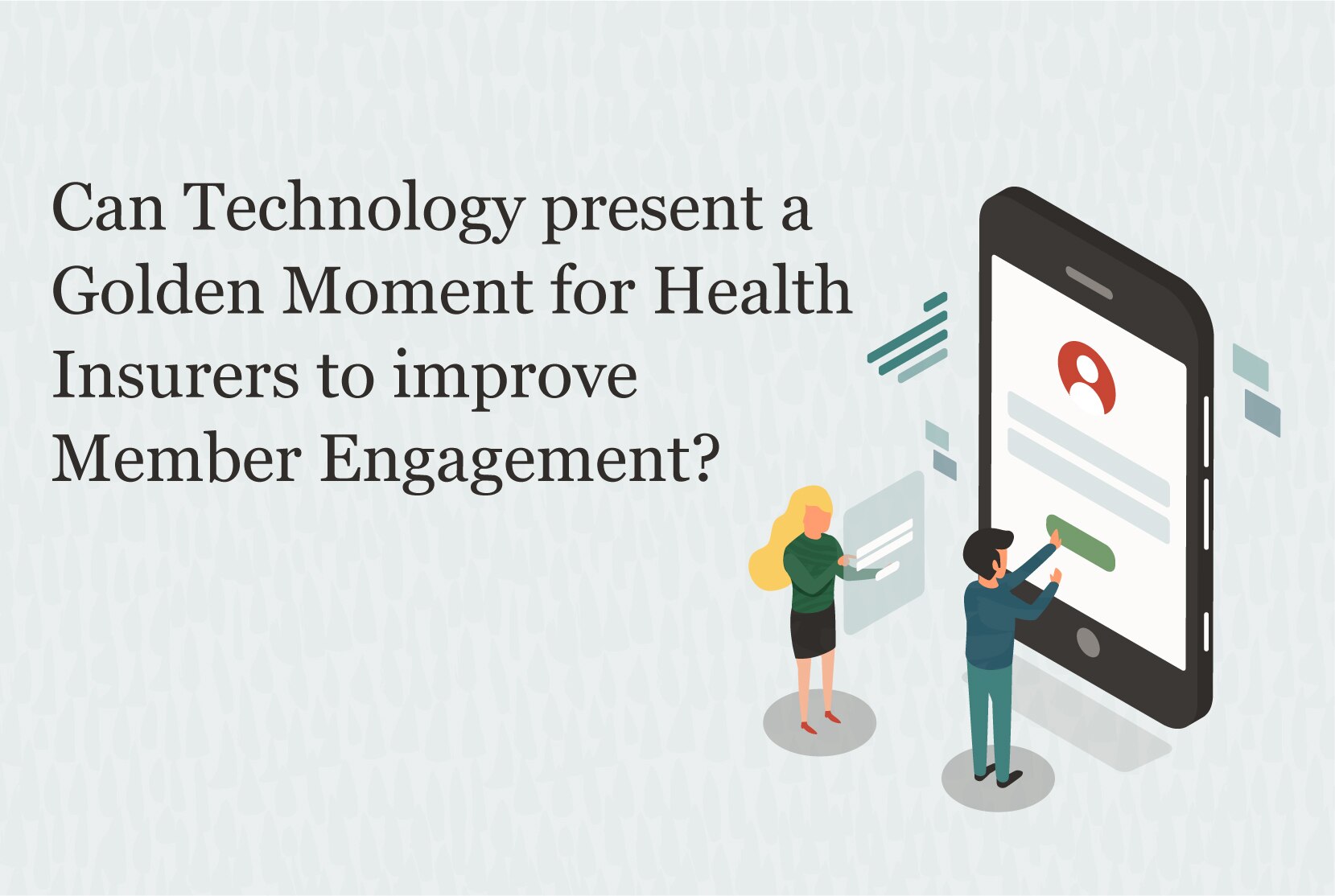Author: Glenn Lottering

Healthcare is a very personal and expensive proposition, but the “user experience” is often not on par with other services we consume in our daily lives. Individuals are raising their expectations when it comes to the engagement and value their healthcare insurer brings to this critical relationship. However, new research suggests that healthcare insurers are not keeping pace with these changing requirements—missing valuable opportunities to improve outcomes, boost member loyalty, and reduce costs.
Last month, J.D. Power’s 2020 U.S. Commercial Member Health Plan Study revealed that 60 percent of privately insured U.S. health plan members were not contacted by their provider with guidance or information about COVID-19. Additionally, 48 percent said their provider has not shown concern for their health during the crisis. But most concerning, only 25 percent of commercial health plan members view their plan as a trusted partner in their health and wellness.
These findings are alarming in a time when it’s more important than ever for health insurers and their members align for better health and outcomes. There is strong evidence that proactive efforts to engage with plan members—whether through advice on reducing costs or helping to direct care—can boost outcomes and member satisfaction. According to the J.D. Power study, health insurers that embrace these types of initiatives have overall satisfaction scores 152 points higher than those that don’t—for an average score of 819 out of 1,000.
A Golden Moment
How can health insurers move the needle when it comes to promoting stronger member engagement and interactions around individual health decisions and lifestyle changes?
In some ways, health insurers find themselves in a golden moment. Technology advances, including expanded adoption of machine learning, AI, and graph analytics, have converged with a sea change in consumers’ desire to share data. More than 60 percent of US consumers are interested in sharing personal information collected by devices as part of health insurance rewards programs, according to an Aite survey of 766 consumers.
This new reality sets up a perfect opportunity for health plans to flip the paradigm from reactive to proactive health solutions. In a reactive paradigm, a member with an illness or a caregiver seeks health services and sorts through available care options. Data is captured to confirm a diagnosis or treatment, but not before. In a proactive environment, data is captured directly from user input as well as passively via IoT-connected devices or medical-grade wearables. Providers can proactively reach out directly and propose actions, programs, and treatments.
Flipping the paradigm begins with actionable data captured and leveraged across the entire member lifecycle—from enrollment to renewal.
A Personalized Journey Across the Member Experience Lifecycle
The enrollment process is the first, and possibly the most valuable opportunity in the member engagement process. It sets the tone and course for the relationship.
Traditionally, health insurers capture essential member data during enrollment, but this data traditionally does not enable them to create a reliable individual risk profile. For example, they cannot assess a member’s probability of a developing a specific disease or condition, and the impact on claims in the future. In short, the health insurer doesn’t know the plan member as a unique individual—to the detriment of both parties.
Health insurers seek low-cost and scalable ways to identify high-risk members. As important, they seek smart triage capabilities to direct the right individuals into the right programs at the right time. This can be a powerful combination for insurers, members, and plan sponsors.
The process has to be fast, simple, and highly accurate. This is no small feat, but next-generation machine learning and artificial intelligence (AI) make it possible today. Oracle Health Insurance and Wellness Platform includes a digital wellness engagement framework that provides a highly accurate predictor of health risks. It is based on and validated with a global database of more than 300 million person-years of clinical data. Using just four simple questions and 103 data points, health insurers can predict with a high degree of accuracy the likelihood of the onset of specific diseases or conditions. And, they can do this at the very start of the member relationship—setting the stage for a highly personalized experience from day one.
Enrollment sets the stage for a strong relationship, but day-to-day interactions solidify it. Members and insurers are eager to create and leverage sustained engagement to improve outcomes. This includes the use of coaching care pathways to help manage members’ health. Evidence shows that short-burst initiatives—he maximum of two months—can have powerful and rapid results.
Wearables and digital platforms also play an important role in engagement and achieving a highly personalized experience. While members are willing to share data, insurers must be sure to make it a secure, simple and valuable process as they will be competing with other digital platforms for members’ health and fitness data.
A single platform to manage all member information is the gold standard, where data from various devices and sources is integrated seamlessly without the need for ongoing user intervention and action. Oracle Health Insurance and Wellness integrates data sources for a single view of each user’s health risk reduction and health score improvement. It also provides a powerful platform to incentivize plan member health improvements with lifestyle coaching, rewards, loyalty program and even premium dashboard—all accessed from a single and highly engaging interface.
The Big Picture
In addition to the ability to quantify wellness in relation to a single member’s claim profile, insurers can leverage Oracle’s platform to financially model, proactively manage care pathways, and manage claims expenses—at an individual member, cohort, or larger population group profile. This ability changes the health plan provider from being a claims payer to a predictive payer with the power to manage its portfolio with greater precision. The end result is greater value for members, insurers, and society as a whole.
Source: Oracle Financial Service
